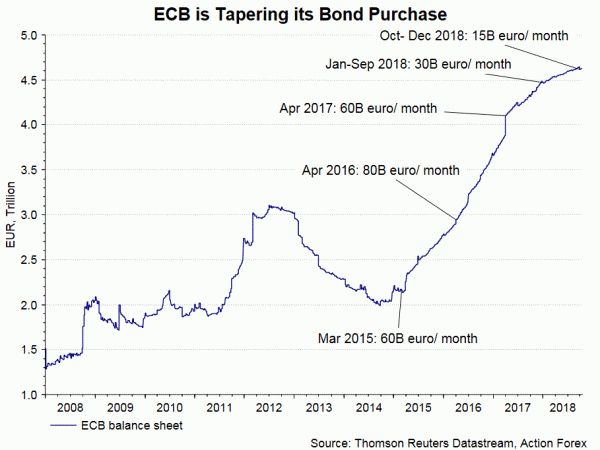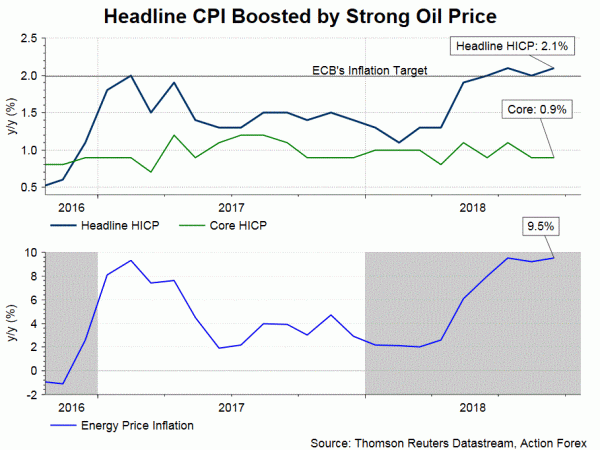We expect ECB to emphasize downside risk to growth in this week’s meeting on October 25. That would be a slight shift from the more hawkish stance at the last meeting six weeks ago. With the path of QE announced in June, the focus is on the reinvestment arrangement. Yet, we do not expect the central bank to give much detail on the issue until the December meeting. Market volatility has recently spiked as Italy’s aggressive budget plan might violate EU’s fiscal rule and has triggered rating downgrade. We expect discussion about the issue at the press conference. There would be no new staff economic projections.
At the testimony before the European Parliament last month, President Mario Draghi noted “a relatively vigorous pick-up in underlying inflation” and suggested that “reflecting these dynamics, the ECB projections foresee inflation excluding food and energy reaching 1.8% in 2020”.
Yet, the dataflow released afterwards did not suggest the same. Headline HICP steadied at +2.1% y/y in September. Core inflation remained soft at +0.9% y/y, from +1.2% in August. The divergence can be explained by strong energy price inflation, which jumped +9.5% y/y last month.
While headline inflation might signal that the ECB’s target (inflation below, but close to, +2%) has more or less been attained, the trend in the core reading indicates that the underlying momentum remains soft. Risk is skewed to downside for ECB’s forecast of 2019 inflation at 1.5%. Meanwhile, the economic growth outlook is clouded by trade protectionism and Brexit uncertainty.
Earlier this month, the Italian government has announced that it would now set the budget deficit targets to 2.4% of GDP for 2019, 2.1% for 2020 and 1.8% for 2021. The draft plan has been submitted to the European Commission for assessment. The Commission would discuss the plan today and is expected to reject the proposal.
The budget plan has led Moody’s to lower Italy’s credit rating to “Baa3” from a previous “Baa2”. It’s now just one notch above junk with a stable outlook. On October 13, Draghi criticized the Italian government for creating damage. As he noted, “a budgetary expansion in a high debt country becomes much more complicated … The results… is that household and firms pay higher interest rates on loans”.
Meanwhile, under the EU rule, the ECB is not allowed to offer rescue if Italy’s government or its banking sector run out of cash unless the country secures a bailout from the EU. We expect questions from the floor at Q&A if Draghi does not talk about it in his speech
At the June meeting, ECB announced that the monthly purchase of asset would reduced to 15B euro from October to December. The central bank has indicated that the reinvestment plan would be revealed before end of the year. While Draghi has affirmed that “capital key” is the guideline for the reinvestment process, ECB member Olli Rehn suggested that the will be a new capital key which is going to be the guiding principle. Given uncertain economic outlook and Italy’s budget issue, we believe December would be a better timing for the announcement. It gives the members more time for assessment.














